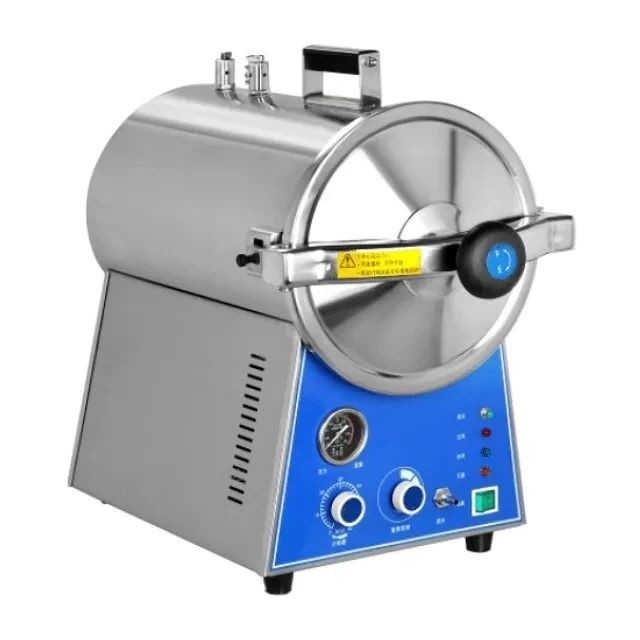
sterilization equipment
Desktop Fast High Pressure Laboratory Autoclave Sterilizer 16L 24L for Lab Use
Item Number : KT-B02
Price varies based on specs and customizations
- Theory
- Autoclave
- Material
- Stainless Steel
- Working Temperature
- 134ºC
Shipping:
Contact us to get shipping details Enjoy On-time Dispatch Guarantee.
Why Choose Us
Easy ordering process, quality products, and dedicated support for your business success.
Introduction
A desktop fast steam sterilizer, also known as a tabletop autoclave, is a compact and efficient device used for sterilizing various types of medical, laboratory, or dental equipment. It employs the process of steam sterilization, which involves exposing the items to high-pressure saturated steam at a specific temperature for a predetermined period.
Detail & Parts
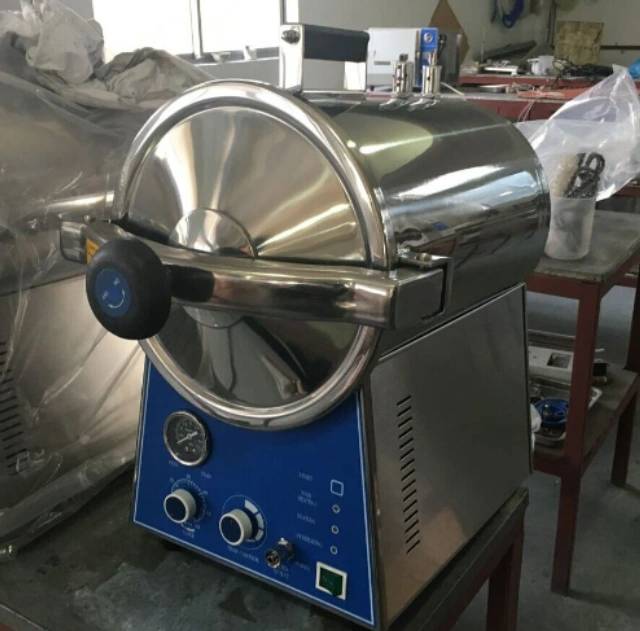
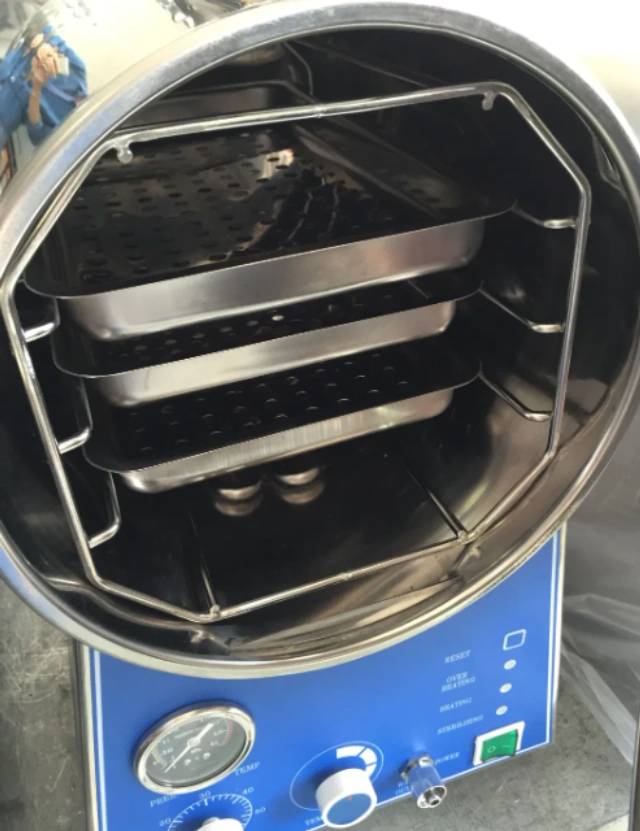
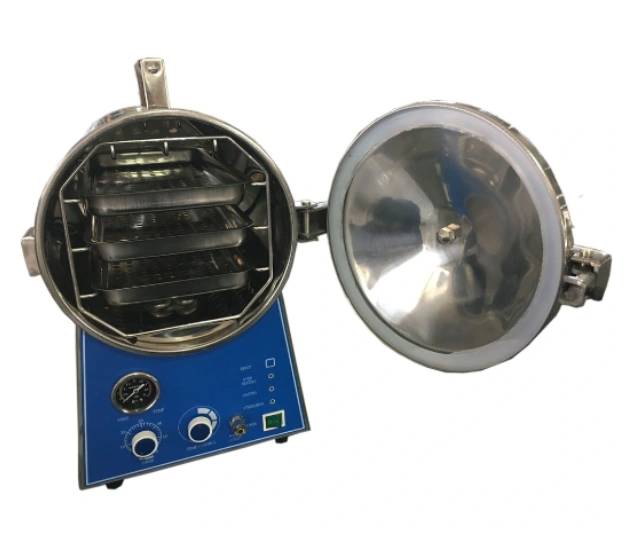

Performance and Features
- Sterilization process: automatic control, no supervision, easy to use;
- Maximum temperature: 134°C sterilization process, suitable for rapid sterilization in 4-6 minutes;
- Water cut protection control;
- Equipped with over-temperature and over-pressure automatic protection devices;
- Automatically cut off the power supply when the sterilization is finished, and give an audio prompt;
- The sterilizer is all made of stainless steel, which is durable.
Technical Parameters
| Model | KT-T16J | KT-T24J |
| Sterilization chamber volume | 16L φ250×360mm | 24L φ270×410mm |
| Fixed work stress | 0.22Mpa | |
| Rated working temperature | 134℃ | |
| Sterilization temperature selection | 105-134℃ | |
| Timing time selection range | 0-99min | |
| Heat uniformity of sterilization room | ≤±1℃ | |
| Power/supply voltage | AC220V.50Hz/2.7KW | |
| Overall dimensions (mm) | 545×328×423 | 560×350×500 |
| Packing size (mm) | 605×390×480 | 620×410×570 |
| Gross weight/net weight | 17/15Kg | 20/18Kg |
Designed for You
KinTek provide deep custom made service and equipment to worldwide customers, our specialized teamwork and rich experienced engineers are capable to undertake the custom tailoring hardware and software equipment requirements, and help our customer to build up the exclusive and personalized equipment and solution!
Would you please drop your ideas to us, our engineers are ready for you now!
FAQ
What Are Some Common Applications Of Sterilization Autoclaves?
What Is An Autoclave Sterilizer?
How Long Does A Typical Sterilization Autoclave Cycle Take?
How Does An Autoclave Sterilizer Work?
Can Autoclave Sterilization Be Validated For Effectiveness?
What Are The Advantages Of Using Autoclave Sterilizers?
Can Autoclave Sterilization Damage Certain Materials?
What Safety Precautions Should Be Taken When Using Autoclave Sterilizers?
How Should Autoclave Sterilization Be Monitored And Documented?
Can All Materials And Items Be Sterilized Using Autoclave Sterilizers?
Are There Different Types Of Autoclave Sterilizers Available?
4.8 / 5
This desktop autoclave is a compact powerhouse! It quickly sterilizes my lab equipment in just minutes.
4.7 / 5
The KINTEK autoclave is a lifesaver in our dental clinic. It's efficient, reliable, and ensures our instruments are always sterile.
4.9 / 5
I highly recommend this autoclave for labs. It's a durable and technologically advanced device that guarantees sterilization.
4.6 / 5
The fast sterilization process of this autoclave is a game-changer. It saves me time and ensures quick turnaround of instruments.
4.8 / 5
The KINTEK autoclave is an excellent investment for our hospital. It's easy to use and provides reliable sterilization.
4.7 / 5
This autoclave is a must-have for dental offices. It's compact, efficient, and keeps our instruments sterile.
4.9 / 5
I'm thoroughly impressed with the KINTEK autoclave. It's a top-notch device that delivers exceptional sterilization results.
4.6 / 5
This autoclave is a valuable addition to our lab. It's reliable, easy to operate, and ensures the sterility of our equipment.
4.8 / 5
The KINTEK autoclave is a great investment for our clinic. It's efficient, user-friendly, and provides peace of mind knowing our instruments are sterile.
4.7 / 5
This autoclave is a game-changer for our tattoo studio. It's compact, easy to use, and ensures the sterility of our equipment.
4.9 / 5
I highly recommend this autoclave for labs. It's a durable and technologically advanced device that guarantees sterilization.
REQUEST A QUOTE
Our professional team will reply to you within one business day. Please feel free to contact us!
Related Products

Stainless High Pressure Autoclave Reactor Laboratory Pressure Reactor
Discover the versatility of Stainless High Pressure Reactor - a safe and reliable solution for direct and indirect heating. Built with stainless steel, it can withstand high temperatures and pressures. Learn more now.

Mini SS High Pressure Autoclave Reactor for Laboratory Use
Mini SS High Pressure Reactor - Ideal for medicine, chemical, and scientific research industries. Programmed heating temp and stirring speed, up to 22Mpa pressure.

Laboratory High Pressure Horizontal Autoclave Steam Sterilizer for Lab Use
The horizontal autoclave steam sterilizer adopts the gravity displacement method to remove the cold air in the inner chamber, so that the inner steam and cold air content is less, and the sterilization is more reliable.
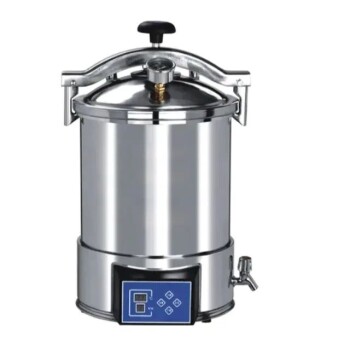
Portable Digital Display Automatic Laboratory Sterilizer Lab Autoclave for Sterilization Pressure
Portable autoclave sterilization pressure is a device that uses pressure saturated steam to quickly and effectively sterilize items.

Laboratory Sterilizer Lab Autoclave Pulsating Vacuum Desktop Steam Sterilizer
The pulsating vacuum desktop steam sterilizer is a compact and reliable device used for rapid sterilization of medical, pharmaceutical, and research items.

Laboratory Sterilizer Lab Autoclave Pulse Vacuum Lifting Sterilizer
The pulse vacuum lifting sterilizer is a state-of-the-art equipment for efficient and precise sterilization. It uses pulsating vacuum technology, customizable cycles, and a user-friendly design for easy operation and safety.
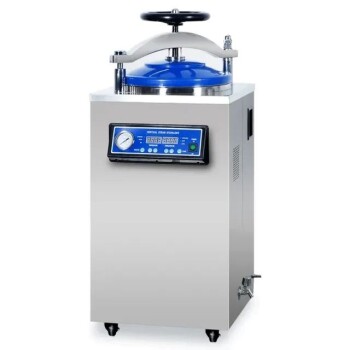
Laboratory High Pressure Steam Sterilizer Vertical Autoclave for Lab Department
Vertical pressure steam sterilizer is a kind of sterilization equipment with automatic control, which is composed of heating system, microcomputer control system and overheating and overpressure protection system.
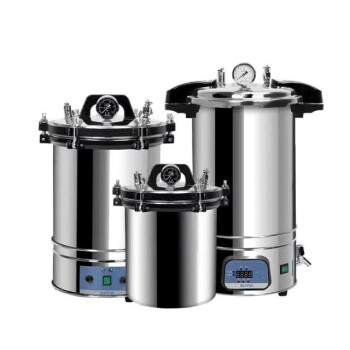
Portable High Pressure Laboratory Autoclave Steam Sterilizer for Lab Use
Portable autoclave sterilization pressure is a device that uses pressure saturated steam to quickly and effectively sterilize items.
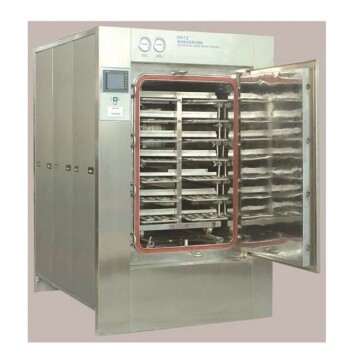
Laboratory Sterilizer Lab Autoclave Herbal Powder Sterilization Machine for Plant
The herbal powder sterilization autoclave machine for Chinese medicine uses saturated steam for effective sterilization. It utilizes the heat and penetrative properties of steam, achieves sterilization after heat preservation, and maintains a good drying effect with a dedicated drying system.

Laboratory Sterilizer Lab Autoclave Vertical Pressure Steam Sterilizer for Liquid Crystal Display Automatic Type
Liquid crystal display automatic vertical sterilizer is a safe, reliable and automatic control sterilization equipment, which is composed of heating system, microcomputer control system and overheating and overvoltage protection system.
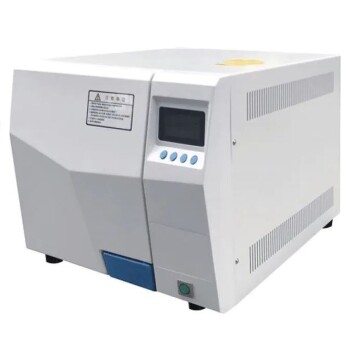
Desktop Fast Laboratory Autoclave Sterilizer 20L 24L for Lab Use
The desktop fast steam sterilizer is a compact and reliable device used for rapid sterilization of medical, pharmaceutical, and research items.

High Pressure Laboratory Autoclave Reactor for Hydrothermal Synthesis
Discover the applications of Hydrothermal Synthesis Reactor - a small, corrosion-resistant reactor for chemical labs. Achieve rapid digestion of insoluble substances in a safe and reliable way. Learn more now.

Customizable High Pressure Reactors for Advanced Scientific and Industrial Applications
This laboratory-scale high-pressure reactor is a high-performance autoclave engineered for precision and safety in demanding research and development environments.
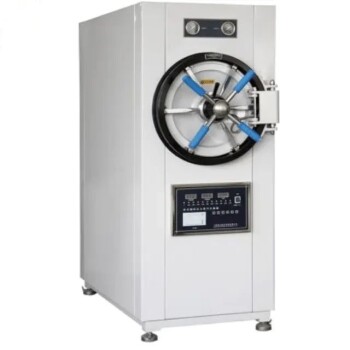
Laboratory Horizontal Autoclave Steam Sterilizer Lab Microcomputer Sterilizer
The horizontal autoclave steam sterilizer adopts the method of gravity displacement to remove the cold air in the inner chamber, so that the content of steam cold air in the inner chamber is less, and the sterilization is more reliable.

Electric Split Lab Cold Isostatic Press CIP Machine for Cold Isostatic Pressing
Split cold isostatic presses are capable of providing higher pressures, making them suitable for testing applications that require high pressure levels.

Desktop Fast Laboratory Autoclave Sterilizer 35L 50L 90L for Lab Use
The desktop fast steam sterilizer is a compact and reliable device used for rapid sterilization of medical, pharmaceutical, and research items. It efficiently sterilizes surgical instruments, glassware, medicines, and resistant materials, making it suitable for various applications.

High Pressure Laboratory Vacuum Tube Furnace Quartz Tubular Furnace
KT-PTF High Pressure Tube Furnace: Compact split tube furnace with strong positive pressure resistance. Working temp up to 1100°C and pressure up to 15Mpa. Also works under controller atmosphere or high vacuum.

Anti-Cracking Press Mold for Lab Use
The anti-cracking press mold is a specialized equipment designed for molding various shapes and sizes of film using high pressure and electric heating.

Warm Isostatic Press WIP Workstation 300Mpa for High Pressure Applications
Discover Warm Isostatic Pressing (WIP) - A cutting-edge technology that enables uniform pressure to shape and press powdered products at a precise temperature. Ideal for complex parts and components in manufacturing.
Related Articles

The Thermodynamics of a Perfect Seal: A Component-Level Approach to Sterilization
Learn why autoclaving your entire electrolytic cell destroys the seal. A guide to understanding material properties and protecting your experiments.

Comprehensive Overview of Warm Isostatic Press and Its Applications
Warm isostatic pressing (WIP) is a variant of cold isostatic pressing (CIP) that includes a heating element. It employs warm water or a similar medium to apply uniform pressure to powdered products from all directions. WIP is a cutting-edge technology that enables isostatic pressing at a temperature that does not exceed the boiling point of the liquid medium.

Comprehensive Analysis of the Laboratory Press and Its Key Features
In the world of laboratory research and testing, having a reliable and efficient laboratory press is crucial. Whether you're working with materials testing, sample preparation, or quality control, a laboratory press can greatly enhance your workflow.

Understanding Isostatic Pressing: Process, Benefits, Limitations, and Applications
Isostatic pressing is a manufacturing process that offers numerous benefits and applications in various industries. It involves subjecting a material to equal pressure from all directions to achieve uniform density and shape. This method is particularly advantageous compared to other production techniques.

Laboratory Safety: High Pressure Equipment and Reactors
This article discusses safety measures and precautions for using high pressure equipment and reactors in laboratories, including case studies and detailed usage instructions.

Basic Cleaning and Disinfection Equipment in the Laboratory
Overview of essential lab cleaning and disinfection tools and their operational principles.

PVD Sputtering Targets and Hot Isostatic Pressing: Part 2
This article discusses the manufacturing and optimization of PVD sputtering targets, focusing on techniques like hot isostatic pressing and high pressure heat treatment.

Rotary Evaporator and Its Application in Traditional Chinese Medicine Refinement
Explores the use of rotary evaporators in the concentration and refinement of traditional Chinese medicine extracts, detailing equipment selection, operation principles, and safety considerations.